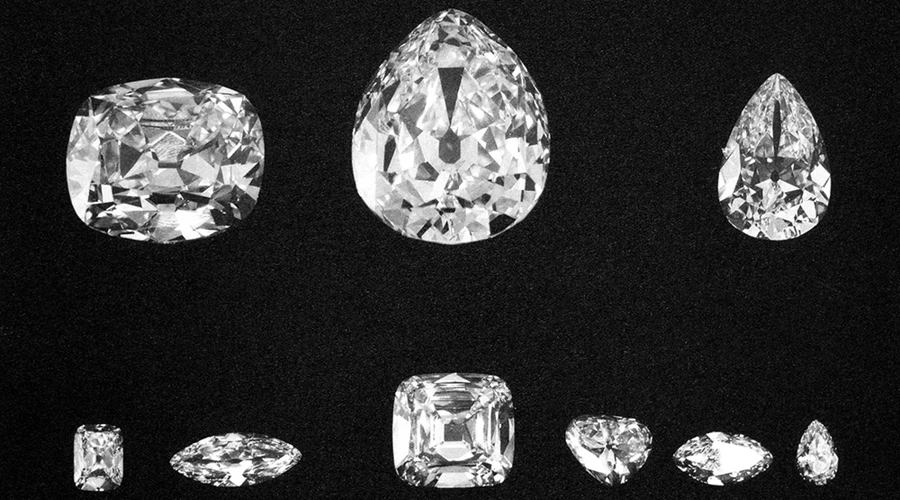When it comes to purchasing a diamond, one of the most important factors to consider is size. This article delves into everything you need to know about diamond size, helping you make informed decisions whether you’re buying an engagement ring or a piece of fine jewelry.
What is Diamond Size?
When we talk 다이아몬드 크기에 대하여, we primarily refer to the carat weight of the diamond. Carat weight is a measurement that indicates how much a diamond weighs, with one carat equal to 0.2 grams. Understanding about diamond size starts with recognizing that a larger carat weight typically translates to a bigger appearance. However, the actual size can vary based on the diamond’s cut, shape, and proportions, which are crucial factors in determining its overall look.
The Importance of Cut and Shape
While carat weight is a significant aspect of about diamond size, the cut and shape of the diamond play equally vital roles. The cut determines how well the diamond reflects light, impacting its brilliance and sparkle. For example, a well-cut diamond may appear larger than a poorly cut diamond of the same carat weight.
Additionally, the shape of the diamond—whether round, princess, emerald, or oval—affects the perceived size. Round diamonds typically appear larger than other shapes of the same carat weight due to their ability to reflect light more efficiently. When considering about diamond size, it’s essential to account for these attributes, as they influence the diamond’s visual appeal and perceived dimensions.
Visual Size vs. Actual Carat Weight
Many buyers may be surprised to learn that the visual size of a diamond does not always correlate directly with its carat weight. Factors such as the diamond’s cut depth and table size can influence how large or small a diamond appears. For example, a diamond with a larger table size may look bigger than another diamond of the same carat weight with a smaller table.
Understanding about diamond size requires an appreciation of these nuances. A diamond with excellent proportions and a well-executed cut can maximize visual size, ensuring that you get the most significant impact for your investment.
Choosing the Right Size for Your Budget
Setting a budget is a crucial step in the diamond-buying process, and understanding about diamond size can help you make wise choices. Generally, as carat weight increases, so does the price per carat. However, it’s worth noting that lab diamonds just below popular carat milestones, such as 1.0 carat or 2.0 carats, can often offer significant savings without compromising too much on visual size.
For instance, a diamond weighing 0.90 carats might look nearly identical to a 1.0-carat diamond but will typically cost less. This knowledge about diamond size can help you get a more substantial stone for your budget if you’re strategic in your selection.
The Role of Settings in Diamond Size Perception
The setting of a diamond can significantly impact its perceived size. Certain styles, such as a halo setting, which encircles the center diamond with smaller stones, can create an illusion of a larger diamond. When considering about diamond size, remember that the right setting can enhance the overall appearance of the ring and make the center stone appear more prominent.
Another factor to consider is the width of the band. A thin band can make the diamond appear larger, while a thicker band can draw attention away from the stone. Thus, selecting the appropriate setting is crucial for optimizing the perceived size of your diamond.
Real-Life Examples of Diamond Size
When evaluating about diamond size, it’s beneficial to look at real-life examples. A 1.0-carat round diamond typically measures about 6.5 mm in diameter, while a 2.0-carat diamond measures approximately 8.1 mm. However, due to various factors, a 1.5-carat diamond might not always appear to be halfway between these two sizes, especially if cut differently.
It’s essential to view several diamonds in person to understand how size translates in various cuts and settings. Seeing diamonds side by side can provide clarity on how about diamond size affects overall appearance and value.
Maintaining Perspective on Diamond Size
While about diamond size is an important consideration, it’s also essential to keep perspective. Many people find that personal significance and emotional value often outweigh the size of the diamond. Choosing a diamond that represents your relationship or has special meaning can be more important than its size.
Moreover, trends in the jewelry industry are shifting toward more unique shapes and personalized designs. Thus, focusing solely on size may overlook the beauty and character of a well-selected stone.
Conclusion
In conclusion, understanding about diamond size is crucial for making an informed purchase. Factors like carat weight, cut, shape, and setting all contribute to how a diamond looks and feels. While larger diamonds may be desirable, it’s essential to balance size with quality and personal significance. By considering all these elements, you can find the perfect diamond that not only fits your budget but also fulfills your emotional and aesthetic desires.




